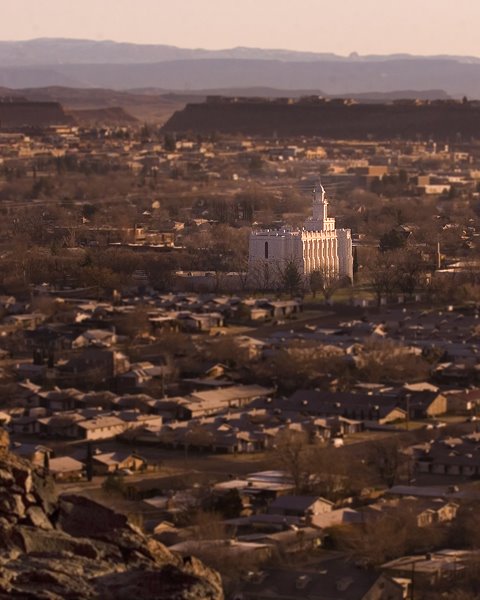Be On Location:
Sherrie mentioned that by the time she gets her camera out, the moment is gone. This brings me to my first thought. Learning how to take decent photos takes some forethought. If your camera sits in the back of the closet and is only brought out once in a while, your chances of producing memorable photos are slim. So the first thing to do is to have your camera handy....on location. Keep it where your family congregates. Put it on a kitchen shelf or in a handy drawer in the family room. Make sure it is charged and has a clean memory card. (I'm making the assumption here that we all are shooting digital.) If you shoot with a compact point and shoot, keep it in your purse when you are away from home like Aunt Jan does. I try to keep mine in my car, but don't always, and there have been many times I wish I had it with me. You won't use your camera, if it's not close by.
Shoot, Shoot, Shoot!
It is the law of averages. The number of memorable photos you end up with is proportional to the number of photos you take! Digital photography has set us all free. No more worrying about wasted shots, wasted film, wasted money as you get your roll of 36 back from the developer and only have 2 decent pictures. We now have the freedom to experiment, figure out what works and what doesn't work. The learning curve has really been shortened. But, here's the caveat...if you pull your camera out and shoot a million pictures with no thought to composition and other photography basics, you probably still won't improve and you'll have a million boring shots. If you really want to improve, you must give thought to what you're doing and learn as you go. Give yourself some challenges, (see if you can take a 'good' photo a day for a month, document the growth of one tomato plant from seedling to harvest, pick a subject and see how many interesting views you can take, pick a subject and take pictures at all different times of the day and night, etc. etc.) Think up some fun, creative and challenging learning projects, and remember that like every skill, the more you practice, the better you will get, and more of your photos will be interesting and memorable.
Check Out Your Camera:
A good photographer can take memorable pictures with any type of camera, from simple point and shoot, to expensive SLR. The trick is to know the limitations of your camera, and compose pictures within those limitations, and, to make sure the camera you are using is in proper working order. (Sherrie, your camera may not be working right, or if you have rechargeable batteries, you may need to buy new ones. Old batteries can slow down the recovery time.) Digital cameras are so reasonable these days, that you should have a camera with basic features and a reasonable pixel count. Over and above this, if you are becoming frustrated because you see a picture but your camera won't allow you to take it, maybe it's time to save your pennies and upgrade. There are terrific buys on e-bay. (If anyone is interested in my views on cameras and camera brands, let me know.) Whatever camera you use, make sure it is working, then read the manual from cover to cover several times so that you know every feature and how each one works.
Time & Effort:
This hardly needs to be said, but I will say it anyway. All of us will get lucky once in while and take wonderful photos that in some way have the thing, (see previous post). ...pictures that are timeless, that we want to look at over and over and they become family favorites. But to 'see' these pictures in our mind's eye before we push the button takes time and effort and practice. Like I said last week, most of us have other hobbies and interests more important that taking pictures, but if photography fascinates you, you can learn how to take great pictures...at least more often than most people. It's an acquired skill; the technical side of learning about exposure, shutter speed, depth of field, etc., and also the artistic side, like learning the basics of strong composition. Joel Sartore, photographer for National Geographic says, "Writing and photography are not bestowed, they're accquired". (Side note, Joel Sartore is the National Geographic photographer who ran the workshop Kay Lynn and I attended several years ago. We learned a ton and had so much fun as well. I'll probably be quoting the wit of Joel frequently.) Anyway, when Jeff bought me my first nice camera, I had to justify the expense by learning how to use all of its features. I went to the library and read every photography book they had. I slowly built my own library of photography books, and now, the education one can receive free on the internet is limitless. I've found several websites where photographers post their work, and make comments and critique each other's photos. I've learned so much in this way. Two are www.webaperture.com and www.perfectlycaptured.com Check them out. So, if you want to improve your photography skills, you must take the time and effort to learn the basics, then practice.
Now for the basics. I mentioned there are some tried and true 'basic' rules of photography. Some apply to the technical side, and some apply to the artistic side, or the composition of a picture. According to Joel Sartore, here are the first two rules of photography:
1. "The first rule of photography is, there are no rules"
2. "The second rule of photography is, refer to Rule #1"
This of course is 'tongue in cheek' but his point is, you learn the basics, and then see if they apply to the composition you are planning to capture. Most of the time following the basics will create a more dynamic composition, but sometimes, the exception to the rule applies and breaking that rule will make for a more interesting photo.
With that disclaimer out of the way, I'm going to start with ways to improve COMPOSITION, because like I said in the previous Tech Talk, you can screw up all the technical stuff and still have a great photo if you nail the thing, and that usually has to do with composition. Simply speaking, composition means, having an interesting subject or subjects, and having a visually pleasing arrangement and presentation of the subjects in the frame. Some of the elements that make up a pleasing composition are:
* simplicity
* perspective or view
* lighting
* framing
* balance
* lines
* rule of thirds
* mergers
* energy
* depth of field
I'll mention the first two today. Usually the less cluttered a photo is the more appealing it is. If you take a picture of your child sitting at the kitchen table, the viewer may get distracted from his cute smile because he is busy looking at the dirty dishes on the table, the stuff on the countertop behind him, the busy wallpaper in the background, etc. When you look thru the viewfinder, look for simplicity. Move to a different angle or zoom in so the focus in on the cute smile and the distracting things are not in the frame. "If your pictures aren't good enough, you're not getting close enough." In other words, fill the frame with your subject, and leave out the distractions.
Look for interesting viewpoints or perspectives that most people don't see. Everyone looks down to see a flower. Try getting down and shooting up for a view of the stem and underside of the petals. Everyone sees beautiful sunsets. Try taking a photo of the reflection of the sunset in a window or a pond. Try to see and capture what most people don't see, and your photos will be more memorable. Everything can't be dramatic. Here is a simple example:

This is a photo of the St. George Temple I took this past weekend. I took this picture mid morning. I walked in front of the temple, looked in the viewfinder and snapped. For me, this is a very boring picture. There is a lot of boring sky, and the distractions of the caution sign, red curb and pavement don't help. The light on the temple itself is flat. This photo does not give me the feeling I want to convey when looking at this beautiful place.

Another morning I got up before sunrise, (Jeff was still sleeping of course!), and I walked around to find a view that had no distractions and that showed off the beauty of this temple. Here the trees frame my subject, (I'll talk about framing at another time), and the beautiful, warm light of sunrise gives me a feeling and mood more in line with how I feel about these sacred places.

As I walked around and tried to find interesting views or perspectives, I noticed the unique fence surrounding the temple grounds and took some shots with the fence in front of the temple, but they were too busy, and the fence, while beautiful, took away from the main focus, which is the temple. Then I decided to use the fence as a frame to highlight the temple. This is a unique and interesting view for me. (Jeff isn't crazy about this one. Like I mentioned before, you're not going to please everyone!)

Last but not least, I wanted a view where I saw the temple in connection with its surroundings. I took the road to the airport, still in the early early morning. I love the soft morning colors, the layers the background mountains make, and especially the morning light highlighting the temple which is in sharp focus, while the surrounding areas are in soft focus.
So enough for today. Let me know your 'critiques' of these photos, and fire away with any questions. Scroll down to see some questions and answers from last week.
